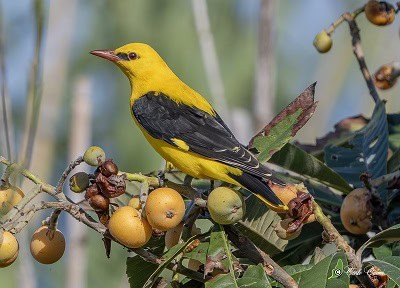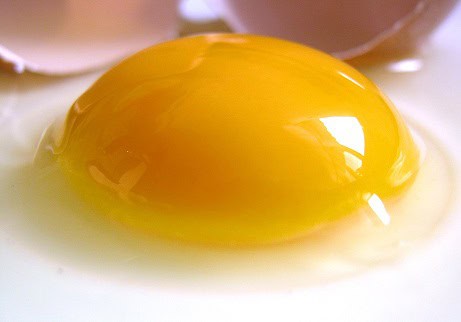 Lutein is an antioxidant found in low levels in a vast variety of plant foods, and high levels in an exclusive handful (spinach, kale). It’s part of the 600-member carotenoid antioxidant family alongside beta-carotene, but unlike that compound, lutein cannot be converted to vitamin A. One of its claims to fame is providing the yellow colour of egg yolks. Crack open an egg to fry, and if its yolk is intensely yellow or orange, that egg will contain more lutein than average.
Lutein is an antioxidant found in low levels in a vast variety of plant foods, and high levels in an exclusive handful (spinach, kale). It’s part of the 600-member carotenoid antioxidant family alongside beta-carotene, but unlike that compound, lutein cannot be converted to vitamin A. One of its claims to fame is providing the yellow colour of egg yolks. Crack open an egg to fry, and if its yolk is intensely yellow or orange, that egg will contain more lutein than average.
Many crafty farmers are adding lutein to chicken feed to make the yolk more appealing to customers. Business is their goal, but inadvertently boosting the health properties is the result.
As for acne? Well, when a chicken swallows lutein, its molecules instantly head straight for a developing yolk. In humans, the default pathway is a little different: lutein preferentially accumulates in the retina of your eyes, and most importantly, your skin.
The chosen sunscreen molecule
It turns out that like vitamin E, lutein is one of the default antioxidants your body uses as its natural sun armour. Lutein can defend against the inflammation and spiralling free radicals which pile inflammation onto your existing acne, allowing you to enjoy more sunlight without having to beat a hasty retreat.
For example, this 2016 study gathered 50 healthy human beings with mild to moderately dry skin. They were fed a supplement containing 10mg of lutein and 2mg of the virtually identical zeaxanthin (one molecular bond away). Another group was fed a placebo. After 12 weeks, the lutein group had a significantly increased minimum erythemal dose (MED), the lowest quantity of sunlight that can inflame an individual’s skin. That’s exactly what we’re looking for.
The same study analysed skin tone and found that elasticity rose in the lutein group. Essentially, lutein helps your skin to snap back into place properly after grabbing it with your fingers (to some extent). Most importantly, this was from a lutein supplement, not a topical – you don’t need to rub in a cream, you just need to swallow spinach or eggs.
Meanwhile, a 2004 study on mice exposed their skin to UV radiation in the wavelength of 280-320nm, in a placebo group and two lutein groups. Lutein acted as an inbuilt dampener on the sinister changes caused by the sunlight, and in particular, inflammatory swelling of the skin (sound familiar?).
Lowering inflammation is a speciality of lutein in non-skin studies, slashing interleukin-8, IL-6, TNF-a, and other immune system footsoldiers linked directly to acne. This should also take effect as lutein molecules sit in your skin.
Absorbs acne-causing free radicals
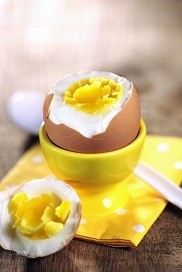 Going back to the mouse study, even free radicals (AKA reactive oxygen species) triggered by sunlight were reduced in the lutein groups. They particularly fell after 28 days and 35 days, most strongly in the 0.4% lutein group, but still decently in the 0.04%.
Going back to the mouse study, even free radicals (AKA reactive oxygen species) triggered by sunlight were reduced in the lutein groups. They particularly fell after 28 days and 35 days, most strongly in the 0.4% lutein group, but still decently in the 0.04%.
As you’ll know, excess free radicals cause greyness, griminess, and added inflammation to existing acne. They contribute to the annoying red blotchiness you get after a fun day on the beach – lutein puts a stop to it. Interestingly though, lutein has no power to filter ultraviolet light itself. It can filter and nullify light in the visible blue spectrum, specifically at 400–475 nm, but these powers don’t extend to the punishing UV (100-400nm). Instead, lutein deactivates the free radicals created by UV light. It deactivates the disassembled oxygen molecules that run rampant through skin cells, ripping apart everything in their path in their demented attempt to grab an electron to restore their stability. Our study above examined wavelengths of 280-320nm specifically, yet still found vastly reduced free radicals.
The study concluded that “Lutein, with its antioxidant properties, is thus photoprotective and an interesting candidate for further investigation“.
With that, we’ve covered the two root causes of acne. Inflammation and oxidative stress stem from numerous sources, including diet, but sun exposure is important, and our eternal quest on this website is to soften its impact, given that you can’t hide away forever in a dark cave and fear all light.
Lutein fact file
Among popular western staples, spinach and kale are easily the richest foods in lutein. For example, spinach contributes 31% of all lutein intake in France, and green beans 4%. Here are the top sources in nature plus some other common staples (quantities per 100 grams)…
- Nasturtium flower petals – 45,000mcg.
- Pot marigold – 29,800mcg.
- Cooked kale – 18,246mcg.
- Cooked spinach – 11,308mcg.
- Swiss chard – 11,000mcg.
- Collard greens – 7,694mcg.
- Watercress – 5,767mcg.
- Garden peas – 2593mcg.
- Romaine lettuce – 2312mcg.
- Zucchini (courgettes) – 2125mcg.
- Brussel sprouts – 1590mcg.
- Pistachios – 1205mcg.
- Cooked broccoli – 1121mcg.
- Cooked carrots – 687mcg.
- Egg (hard-boiled) – 353mcg.
- Raw avocado – 271mcg.
Even though eggs and broccoli contain far less than spinach, they’re still great sources, because the average American is estimated to eat less than 1mg (1000mcg) of lutein daily. Nasturtium and pot marigold are bright orange flowers and like in an egg yolk, that’s the lutein showing its pigmenting effects.
Officially, lutein isn’t an essential nutrient, but it hovers on the periphery of this exclusive group. Many companies include it in their multivitamins, as it’s so essential for eye health. Lutein accumulates in the macula of your retina where its abilities to filter blue light wavelengths (400-480nm) prevent the oxidative damage to vision. There’s even evidence suggesting that higher lutein diets delay cataracts and age-related macular degeneration, the main cause of blindness in the over 65s. Lutein could even be a way to subtle change your eye colour by adding flecks of yellow pigment.
Marigold flowers are commonly the source of lutein for multivitamins, as well as chicken feed. In their normal diet, chickens don’t automatically contain lutein, but gather it from random backyard weeds they eat.
Why lutein is a glow-giver
Lutein is also used by various songbirds to dye their own feathers. These include such bright yellow creatures of the northern hemisphere as golden orioles (see left), golden yellowthroats, and yellow warblers. Other birds combine lutein with blue pigments to turn themselves bright green.
In Indonesia, there’s a family of rare birds called Javan green magpies, which live in Java’s dark hilly jungles and are often kidnapped and stored in overcrowded bird markets for sale. To their captors’ dismay, these birds often fade to blue after weeks of mere cruel storage, after being fed a basic bird feed diet. The causes were long mysterious, but adding lutein to their diet restored their fabulous green colour within days.
By eating lutein, you too can gain a fabulous colour just like an exotic bird. Like with other carotenoids (beta-carotene, lycopene), you can dot lutein molecules all around your epidermis and gain a healthy glow. This study on 50 healthy humans gave them 10mg of lutein plus 2mg of zeaxanthanin, and found that after 12 weeks, “Overall skin tone was significantly improved in the L/Zi group compared to placebo“.
Their skin also become more even, as lutein prevented random ultra-dense patches of melanin from forming, e.g. pheomelanin and eumelanin.
Like with other carotenoids, the only downside to lutein is “bronzing” – accumulating so much in your skin that you change colour. I don’t know about you, but walking around town as a bronze-armoured human sounds pretty cool to me. But I guess we should list it as an official risk at high doses.
Arrives within days
While beta-carotene has the added acne bonus of converting to vitamin A and reducing oily skin, lutein is proven to be stronger as an antioxidant. Lutein not only roams the skin gobbling up free radicals like Pacman itself, but increases antioxidants manufactured by your own body, including glutathione, superoxide dismutase and catalase (study).
Eat two boiled eggs or devour a can of spinach like Popeye, and the lutein will arrive at your face perhaps in several days. A study on mice examined the timeframe. It compared three intakes: no lutein, 0.04mg of lutein, or 0.4mg of lutein. After 14 days, the mice in the 0.4mg group already had significantly higher lutein levels in their skin. By 29 days, it accumulated further, until maxing out at 35 days, with far higher lutein content than baseline.
In the 0.04mg mice, lutein increased more slowly in the skin, but was significantly higher after 35 days. Even after 14 days, there was a slight rise, just without reaching statistical significance.
Your skin tone could certainly benefit within 3-4 weeks. Similarly, egg farmers have noticed that eggs with much higher quantities of lutein arrive just 14 days after cranking up levels in the chicken coop feed (including much darker yolks).
Lutein may neuter acne bacteria
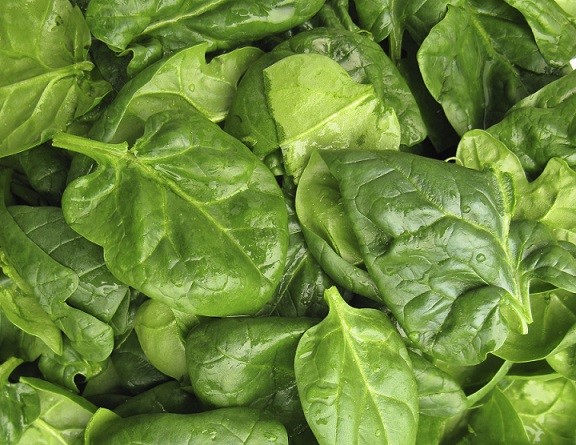 I would have already written a glowing article about this natural egg compound if the following discovery hadn’t sprung up. But spring up it did, and we’re talking about a study released just last year in 2023. Remember that lutein builds itself directly into your skin and sits there for months. Remember that lutein can cut off microscopic free radicals moving through the very structures of your skin. Now read about this experiment on p.acnes bacteria, where lutein was tested against the immune system inflammation it induced. The presence of p.acnes increased chemicals like (IL)-1β, IL-18, and TNF-α in human keratinocytes – this is the typical process that causes acne. Applying lutein reversed all of these increases. The p.acnes was rendered powerless.
I would have already written a glowing article about this natural egg compound if the following discovery hadn’t sprung up. But spring up it did, and we’re talking about a study released just last year in 2023. Remember that lutein builds itself directly into your skin and sits there for months. Remember that lutein can cut off microscopic free radicals moving through the very structures of your skin. Now read about this experiment on p.acnes bacteria, where lutein was tested against the immune system inflammation it induced. The presence of p.acnes increased chemicals like (IL)-1β, IL-18, and TNF-α in human keratinocytes – this is the typical process that causes acne. Applying lutein reversed all of these increases. The p.acnes was rendered powerless.
In a separate experiment, lutein produced visible real world effects. P.acnes was applied to mice ears, and lutein reverse the redness and swelling this caused.
Lowering inflammation overall is promising for a remedy, but inhibiting the inflammation specifically caused by p.acnes takes it to another level of greatness, because that’s the whole process behind the pimples you see. Lutein even reversed an increase in matrixmetalloproteinease-3 (MMP3) caused by p.acnes. This tricksy enzyme degrades and recycles collagen in the skin.
Eat more lutein, and the scheming and cackling p.acnes will suddenly find itself powerless. It will summon the arsenal of inflammatory chemicals it normally does, awaiting their faithful response, only for nothing to arrive.
Verdict – your goals
So what do I actually recommend you do about lutein? Not much is the answer, and I definitely don’t recommend a dedicated supplement.
Lutein is undoubtedly an excellent substance for sunscreen protection, glow and possibly suppressing p.acnes. However, if you’re already following the acne-friendly diet we recommend, it’s virtually inevitable that you’ll stumble into a food containing lutein.
Maybe you’ve added broccoli for lunch and eggs for breakfast. Perhaps you eat one different green vegetable each day per week, and spinach is one in rotation. In that case, your lutein supplies will already be replenished.
Instead, lutein is yet another shining example of the glory that awaits you in an acne-friendly diet, the possibilities that it holds. Your goal then, is to conduct a brief analysis of your diet and compare it to the top sources list above. Take action if you notice a shocking lutein gap. If there is no gap, you can complete this task in about 60 seconds, and stash lutein away at the back of your mind.
Lutein – best of the rest
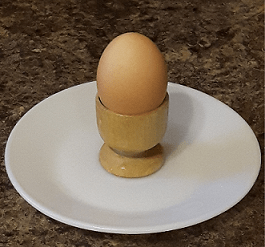 Now here’s a bunch of secrets we’ve discovered in the obscure databanks of scientific journals. Even if you don’t bother to implement this information, you’ll still absorb a ton of lutein. Do with these facts what you will!
Now here’s a bunch of secrets we’ve discovered in the obscure databanks of scientific journals. Even if you don’t bother to implement this information, you’ll still absorb a ton of lutein. Do with these facts what you will!
Eggs – like with broccoli and its sulphoraphane, or potatoes and their vitamin C, cooking affects the quantity of lutein that remains in the eggs on your dinnerplate. One study examined three cooking methods, boiling, microwaving and frying, and produced a 23%, 17% and 19% reduction in lutein content respectively. This specifically tested trans-lutein, the best absorbed form.
Spinach – with spinach and green beans the story changed, as lutein was the stablest out of the nutrients tested. Boiling the vegetables reduced ascorbic acid (vitamin C) and folate (B9) content but not lutein. Steaming the vegetables reduced the ascorbic acid, but neither folate nor lutein.
Avocado oil – avocado is a magic secret which any acne patient should know about, as it not only accelerates the conversion of carotenoid antioxidants to vitamin A (great for oily skin), but enhances the absorption of non-converting carotenoids. This includes lutein, according to a classic study on salad, where the addition of avocado enhanced several health-giving compounds: alpha-carotene, beta-carotene, and lutein. Absorption increased 5.1 fold for lutein.
Olive oil – the method of avocado’s madness is believed to be mainly consisting of monounsaturated fats, unlike the saturated fats of butter or the polyunsaturated fats of soybean oil. Olive oil also contains 70-80% monounsaturated fats, so we could make an educated guess that it enhances lutein absorption similarly. Great news: a 2014 study found exactly that. Adding olive or avocado oil to any green vegetables would be an intelligent decision.
Thanks for reading!

